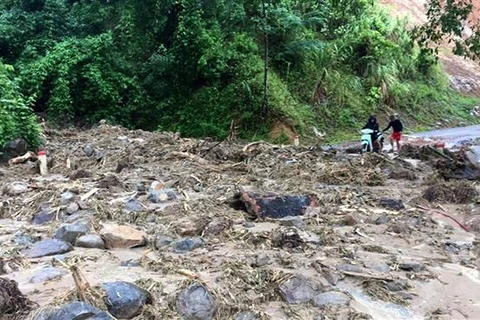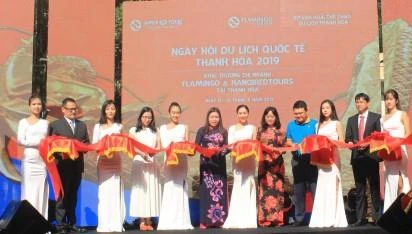Hanoi (VNA) – Thanh Hoa in the central region expects to become an industrialised province by 2030, with synchronous, upgraded socio-economic infrastructure.
The Prime Minister issued Decision No. 1629/QD-TTg approving the task of outlining the province’s planning scheme during the 2021-2030 period, with a vision towards 2045.
Accordingly, by 2030, Thanh Hoa will become an industrialised province, with synchronous, upgraded socio-economic infrastructure, suitable with development trends of the region and the country, as well as the Association of Southeast Asian Nations (ASEAN) and the world at large.
The planning scheme must be made on the basis of multidimensional, multisectoral approach, ensuring scientific requirements and applicability, the leader said.
It includes analysis, assessment and forecast of Thanh Hoa’s typical development factors and conditions, along with development plans for major sectors in the locality, and orientations to carry forward its potential and advantages.
The PM asked Thanh Hoa to allocate resources to socio-economic activities in line with the national and regional planning schemes decided by competent State agencies, towards sustainable development in tandem with environmental protection, natural disaster combat and climate change response.
The provincial planning must match the context of international integration, as well as commitments in international treaties, both bilateral and multilateral, to which Vietnam is a member, he said.
 Nguyen Dinh Xung, Chairman of the provincial People’s Committee, speaks at the conference. (Source: thanhhoa.gov)
Nguyen Dinh Xung, Chairman of the provincial People’s Committee, speaks at the conference. (Source: thanhhoa.gov) At a regular meeting of the provincial People’s Committee, delegates looked into Thanh Hoa’s socio-economic development in October, and mapped out key tasks for November.
Regarding major orientations and targets for the 2021-2025 period, Nguyen Dinh Xung, Chairman of the provincial People’s Committee, emphasised the need to develop groups of solutions, focusing on agricultural development towards centralised, large-scale mass production, and improving the local investment and business environment.
He also urged efforts to effectively implement infrastructure projects, improve the efficiency of scientific-technological applications, increase cultural-social activities, enhance the management of natural resources and food safety, consolidate national defence-security, maintain political security and ensure social order and safety, thus facilitating socio-economic development.
The delegates shared the view on socio-economic development in October and the first ten months of this year, with industrial production estimated at 10.76 trillion VND (466.85 million USD) and 103.93 trillion VND, respectively, up 41.3 percent year-on-year.
During the January-October period, Thanh Hoa welcomed 9.37 million tourists, a year-on-year rise of 22.4 percent, completing 98.7 percent of the set target.
The locality’s budget collection was also equal to 84 percent of the estimate, and increased 38 percent compared with the same period last year.
Its poverty rate also dropped to 3.27 percent, down 2.57 percent against the end of 2018, and fulfilling the target.
Prime Minister Nguyen Xuan Phuc earlier this year approved the general planning for Thanh Hoa city and Thanh Hoa province’s urban master planning up to 2040.
Per the plans, Thanh Hoa urban area which contains Thanh Hoa city as its centre will become a first-tier urban area in Thanh Hoa province.
Urban areas in Vietnam are categorised according to their development, with the first tier only behind the largest cities of Hanoi and Ho Chi Minh City.
The master scheme aims to raise the position and status of the Thanh Hoa urban area to become a connectivity area among the North-Central region, the Red River Delta, the Northwest region, and the Northeast region of Laos.
Thanh Hoa city is expected to become a modern urban area, with green growth and adaptation to climate change.
The urban area is hoped to include developed industries, services, trade, culture, tourism, history, ecology, land for housing development and a real estate.
Under the planning, the area will have a total area of 232.64sq.km and a population of 435,300 people. Total population is set to reach about 635,000 by 2030 and 720,000 by 2040.
The main content of the master plan is to review the development direction for urban areas and review the land fund for urban area development. Urban design, strategic environmental assessment, climate change adaptation capacity and green urban area criteria will be added to the master plan./.























